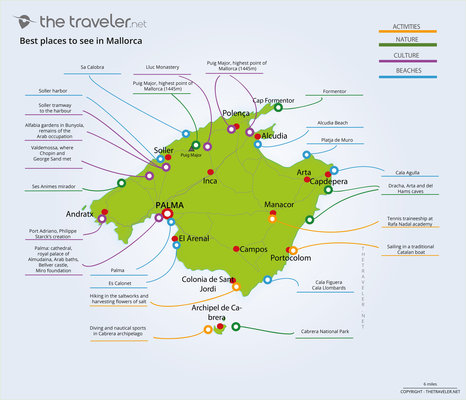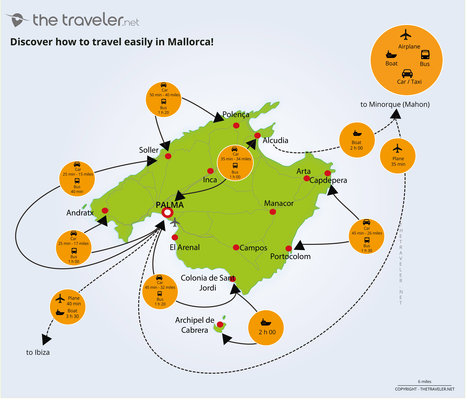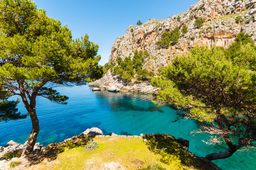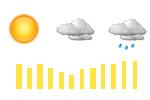Our tourist maps
Ready for your holiday to Mallorca? The beautiful isle, jewel of the Mediterranean is waiting for you. With its coves and emerald waters and its breathtaking views, it has surprises in store for you.To help plan your holidays, take a look at our practical guides for a trouble-free trip.
Attractions maps
Mallorca will not fail to surprise you. Think there are only beaches to be seen? Don’t believe it… winding mountain roads, hidden caves, beautiful gardens, enchanting villages… the largest of the Balearic Islands has treats in store for you.
Mysteries of the west:
The rocky west coast spreads out around the small tourist port of Sóller. The limestone cliffs plunge directly into the sea and reveal splendid panoramas from Formentor and Mirador de Ses Animes. Rocky inlets open onto translucent waters and the mountains hide peaceful villages surrounded by vineyards and olive groves. Deia and Valdemossa, with their ochre houses and winding roads, charm everyone who visits. These hamlets have always attracted artists and writers, such as Chopin and Georges Sand, who stayed for a memorable winter at the Charterhouse in Valdemossa. Further north, Serra de Tramuntana reveals its fabulous hiking trails for walkers of all levels, the ascent of the Puig Major and the road to the Lluc Monastery being only two examples.
Treasures of Palma:
In the south, the Bay of Palma offers miles of fine sand appreciated by tourists the world over. The city of Palma has retained traces of its occupying civilisations over the centuries, from Arabic to catholic. You can cross the centuries by visiting the Almudaina Royal Palace and Arabic baths and then La Seu, the grandiose cathedral of Palma, where the ochre vaults change colour by the hour. The Bellver Castle provides an incomparable view of the Bay of Palma. Further north, the Alfabia gardens exude melancholy having retained their original languid feel and their arbours and fountains. The Es Baluard museum displays modern works of the great Spanish artists, Picasso and Miró among them.
East, discoveries and sports:
On the east coast of Mallorca, Serra de Levant is an Eden for those who want to make the most of nature and the sea. In Arta, Drach and elsewhere, erosion has sculpted caves which are a delight for kayakers and sailors. The rocks are a host to rocky inlets of which Alcudia is the best known. Sporting types can dive the Cabrera archipelago with its rich population of sea life. Or have a tennis lesson at the Rafa Nadal Academy in Menacor (although it will set you back 1,000 euros a week).
Routes and distances maps
Do you want to organise your travel around Mallorca? By bus, train or car, our route maps will take the trials out of travelling.
How to get there and get off the island?
You can get to Mallorca by boat or by air. The ferry to Palma departs from three Spanish towns: Barcelona, Valence and Dénia. A direct service to Alcudia from Barcelona is also available. The crossing takes a few hours, or a whole night depending on whether you take the express or not. If you have driven through France to Spain, it is possible to take your car to the island. If not, it is preferable to hire a vehicle when you arrive. If you are arriving by plane, daily flights are available. Visit our ‘flights’ page and use our comparison tool to find cheap flights to Mallorca.
How to reach the beautiful islands of Ibiza and Menorca?
You have a choice if you want to visit Minorca. Either fly from Palma to Mahon. It will take 35 minutes. Or you can take the boat from Alcudia, in northernmost Mallorca, and you will arrive two hours later in Ciutadella. There is a Palma-Mahon crossing but only once a week. To get to Ibiza takes 40 minutes by plane or 3 and a half hours by boat, landing in Eivissa (Ibiza Town).
By car:
Mallorca’s roads are well-maintained and it has several motorways, but it is a mountainous island with impressively winding roads. Take care - the hairpin bends are disorienting. The Ma11 from Palma to Sóller, for example, is quite dizzying as you travel through the passes. Forty years ago, a tunnel bypass was bored out to manage the swathes of tourist. It is the only section of toll road, and should be avoided if you don’t want to pay every time you cross the island. Today you can reach Sóller from Palma in half an hour. Along the scenic roads, tourists drive slowly to take in the views, and the locals… well, they do the same. Expect your journeys to take a little longer if you are using these picturesque roads. It takes about 30 minutes to get to Andratx on the Ma1. Allow an hour to reach Alcudia from Palma on the Ma13 or to Colonia Sant Jordi on the Ma19. It takes a little longer to get to Capdepera (Ma15) and Pollença (Ma13, then secondary roads). Your UK driving license is valid for driving in Mallorca. Note that it is not possible to leave the island with a hire car, that includes trips to Ibiza and Minorca!
Public transport:
The public transport network is well developed. There is a metro in Palma and a free self-service bike scheme - the ‘Mou-Te Bé’. The Interurban public network links Mallorca’s touristic towns with many bus services from Palma. You can get to Es Arenal or Sollër in 30 minutes, for example. Give yourself an hour to get to Manacor or Alcudia, slightly longer for Andratx, Colonia de Sant Jordi ad Capdepera. Mainline departures are every 30 minutes during the day and hourly for secondary services. You can also take the train, for example for Soller or Manacor. The trains leave 4 times daily and are slower than the buses, but you will have time to admire the landscape. Finally, the tourist tram from Sóller to Port de Sóller is a must!
You may also like
-
Flights to Mallorca
All you need to know before buying your plane ticket
-
Places to visit in Mallorca
The must-see attractions and the best places to visit Mallorca!
-
Hotel or vacation rental?
Find your dream accommodation in Mallorca at the best price...
-
When to go?
Be sure to visit Mallorca at the best time of year!
and why not...
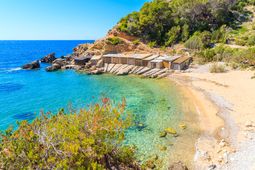 Ibiza
Ibiza

